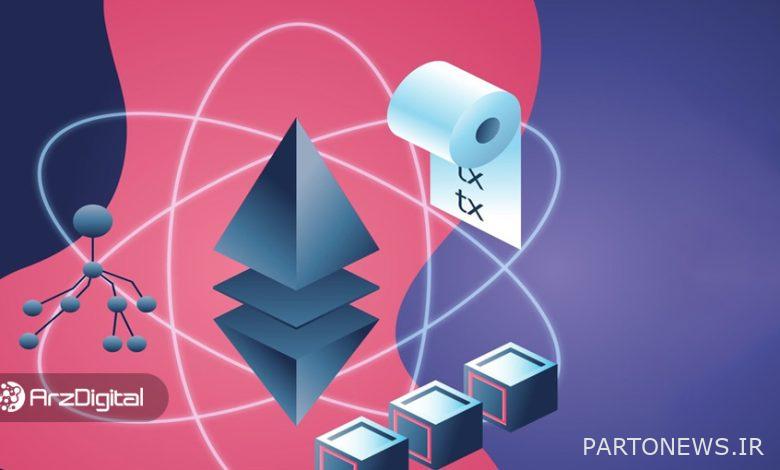Atrium second layer solutions; A critic’s point of view

For many years, experts and activists in the field of China blockchain have been talking about second-tier solutions as a solution to various blockchain problems. The purpose of implementing the second layer solutions is to solve the problem of scalability, speed and also high energy consumption in this blockchain; But can these solutions improve the condition of blockchains like Atrium, or is the truth something else? While the issue of second-tier solutions has many supporters, there are critics who question this claim, arguing that second-tier solutions can not solve the problems that networks like Atrium struggle with. But what do the second layer solutions point to?
In general, a set of solutions offered outside the blockchain designed to increase network speed, efficiency, and scalability is called a second-layer solution. Various networks, such as Atrium, require Layer 2 solutions, and to date, several solutions have been proposed for it, such as Plasma, Sidechains, State Channels, and Rollups. It should be noted that by launching the second layer solutions, a large amount of network load is transferred from the first layer, ie the main network, out of it, and this issue causes the solution or modification of some blockchain problems.
We have read several articles in support of the second layer solution; But this time in Note From a user by name Oxjim On the Medium website, we discuss a critical approach to Atrium Network’s second-tier solutions, seeking to answer the question, “Can Tier 2 solutions improve Atrium?” Or not.
Is Are the solutions of the second layer the solution of the atrium?
Layer 2 solutions have been proposed to solve the very high cost problem of Atrium network gas and are expected to solve the network congestion problem forever. Because the cost of atrium gas has skyrocketed because of this overcrowding, many have argued that second-tier solutions could be the solution; The magic wand that solves the annoying problem of atrial fibrillation forever.
Read more: What is Gas in the Atrium?
To be honest, until a few weeks ago, I thought that when second-tier solutions were used in Atrium transactions, Atrium would get rid of its problems forever and become a flawless platform.
However, as I read more about the second tier solutions and talked to a few people on Twitter and Discord, I gradually realized that although Atrium desperately needs these solutions, they in turn have potential ambiguities and problems; Issues that could prevent the network from achieving its vision of becoming a global supercomputer.
In general, the solutions of the second layer are on the right track, and although the process of finalizing Atrium 2.0 is also planned; But we still need these solutions. The output power and speed that these solutions provide will not be feasible even in the first layer of Atrium 2.0.
The problem is that these solutions are not perfect. Maybe that’s why there are several solutions, such as plasma, side chains, and payment channels, for scalability of the atrium.
Here are some potential problems and unanswered questions I encountered about Layer 2 scalability solutions.
Limited interaction with each other
In my opinion, the real power and power of decentralized finance (DeFi) lies in the ability to cooperate or interact; A topic that stems from its open source technology. Personally, I think that the feature of interaction is the most powerful part of Defy. Yes, finance is an extraordinary subject without hindrance or freedom; Because it provides users with fair and unique access. This is exactly what some 2 billion people in the world do not have.
Read more: What is DeFi or Decentralized Finance?
It’s a tremendous feat that, since the advent of Web 2.0, individuals have been able to take control of their finances, data, and assets through intermediaries such as banks.
But I think adding another layer centered on interaction can be a winning solution. This will create completely new and unprecedented products that will completely change our view of finance.
In my subconscious, I see Diffie, like the Internet in the 1990s, as an endless network of innovations; A network that could create companies we never thought possible.
By implementing the second layer solutions It is possible that, Interoperability, limited or completely eliminated; Because currently none of the second layer solutions interact with each other.
In other words, decentralized applications (DApp) in the second layer can not easily communicate with other applications in this layer. This issue breaks the power of interaction in this area.

In the first layer, a transaction can interact with several other diff protocols to build a completely new financial product; But in the second layer, that transaction can only interact with defensive protocols that are in their chain or blockchain.
For example, Aave is in the Polygon block and Uniswap is in Optimism; Therefore, it is not possible to create a transaction that invokes both smart contracts, namely Swap and Union Swap. As a result of this scatter, the ability to interact is reduced and the magic power of the defense is greatly reduced.
Of course, this problem can be solved by using an interactive layer such as Paligan, which seeks to connect all the solutions of the second layer in a standard framework; However, there is a long way to go to build all of these solutions based on the Paligan platform and standards.
Liquidity
One of the reasons for the fragmentation of decentralized applications in the second layer of the various networks is that their liquidity is also fragmented. Liquidity is important in all financial markets; Because it creates a healthy market in which buyers and sellers meet in the open market and exchange goods by compromising on bid prices without fluctuating sharply.
Currently, most of the liquidity is in the Atrium China block, and healthy and liquid markets have been created for all financial products and tokens on this platform; But as we move to the second tier, we will see that current liquidity will be split between the first tier and other scalable solutions rather than concentrated in the atrium.
Sensitivity about transfer to Atrium 2.0
Finally, as we approach the final stages of building a multi-chain world based on second-tier solutions over the Atrium network, serious differences arise between each of the second tier in order to interact more with Difai.
We will definitely see several bridges between the second tier solutions. Of course, due to the current situation, we are expected to spend a lot of time moving our capital between these solutions. Accordingly, we should expect one or more accounts for each of the second tier chains. On the other hand, tracking funds among these projects will also be troublesome in terms of user experience.
Suppose we have an AAVE token in Paligan and we want to swap it with the UNI token using the Uniswap platform in Optimism.
First we need to take our AAVE token from Paligan and return it to the atrium and transfer it back from the first layer atrium to Optimism. The harvesting process will also be long; Because the harvest from Paligan takes about 15 minutes, and the optimism due to the use of optimistic roll-up, the transfer time will be one to two weeks.
Conclusion
I believe that the Atrium community is a strong group that can overcome these problems. The issues raised are also solvable, and most problems will probably be resolved soon after all the second-tier scalability solutions are available. When powerful, practical, and user-friendly solutions finally come to fruition, we will see integration in the second tier.
I hope that eventually a strong interactive protocol will emerge between these solutions to maintain the character of interaction and liquidity. It does not matter how this is achieved; By the Paligan framework or the steps between the second layers.
Anthony Sassano, creator of EthHub, aptly describes the situation. He says:
You can think of what is currently happening in the Layer 2 ecosystem as a stage of acceptance and innovation; The stage at which many different solutions are being tried and tested simultaneously. Certainly not all of them will succeed in the long run. I do not know that there is only one solution that can be used in the scalability debate Victorious Be. As I mentioned, each scalable solution has its own characteristics, assumptions, generalities, and strengths and weaknesses. Some are convenient for the payment process, some are compatible with Atrium Virtual Machine (EVM), and some offer greater scalability in exchange for decentralization.

